#comparative religion
Text




Community 1x12 - Comparative Religion
Animal Control 2x05 - Dogs and Chickens
#community references in animal control#animal control fox#animal control#joel mchale#frank shaw#jeff winger#community#community nbc#ken jeong#ben chang#animal control 2x05#dogs and chickens#comparative religion#roman park#joel and ken#pb
81 notes
·
View notes
Text

My husband just texted me this and I am deceased.
#comparative religion#Bible#quran#the book of mormon#Jesus in space#mormon#lds#mormonism#tumblrstake#the church of jesus christ of latter day saints#religion#christianity#faith
54 notes
·
View notes
Photo

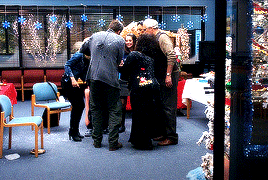




Function with relative ease.
#community#communitygifs#communityedit#sitcomedit#tvedit#christmasedit#abed nadir#jeff winger#britta perry#annie edison#troy barnes#shirley bennett#pierce hawthorne#comparative religion#abed's uncontrollable christmas#regional holiday music#*gifs#*comm#merry christmas tumblr friends :)#*bybeingfacetious
504 notes
·
View notes
Text
Vardzia, a Medieval Cave City in Georgia (South Caucasus), built in 1150-1200 CE: Vardzia was designed to be used as a fortress/monastery; it was accessible only through hidden passageways, and it contained more than 6,000 caves, 15 chapels, 25 wine cellars, an apothecary, a forge, a bakery, farming terraces, and an irrigation system

The monastic caves at Vardzia cover an area of about 500 meters. They are carved into the cliffs along the Erusheti mountains, which are located in Javakheti (a southern province near the borders between Georgia, Turkey, and Armenia).
Vardzia was originally meant to serve as a fortress, particularly in the event of a Mongol Invasion. It was protected by defensive walls, and the cave system itself was largely concealed within the mountain (though much of it is now exposed); it also contained a secret escape tunnel and several dead-end tunnels that were designed to delay/confuse enemy forces. The cave city could only be accessed through a series of hidden passageways that began near the banks of the Mtkvari River (which runs through the valley below the cave complex). Water was supplied through an irrigation system that was connected to the river, providing the inhabitants with both drinking water and agricultural irrigation, as the site contained its own terraced farmland.
The cave complex also functioned as a monastery, with a large collection of manuscripts and relics ultimately being housed at the site.

In its prime, the complex at Vardzia was inhabited by tens of thousands of residents.
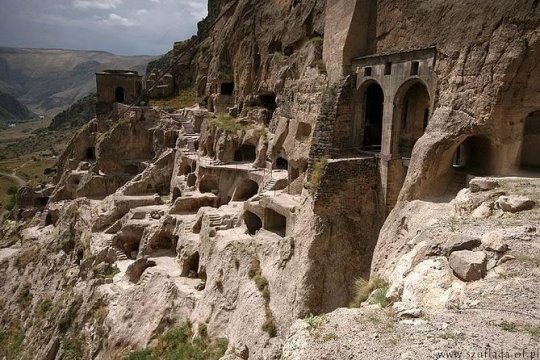
Unfortunately, most of the original structures at Vardzia were destroyed by an earthquake that struck the region in 1283 CE, just a century after its construction; the earthquake sheared away the outer layer of the cliffside, exposed many of the caves, and demolished almost two-thirds of the site. The surviving structures represent only a fraction of the cave complex that once existed at Vardzia, with only about 500 caves still intact.
When the earthquake tore through the site in 1283, much of the fortress and many of its defenses were also destroyed, and Vardzia lost most of its military/defensive purposes. Still, it continued to operate as a Georgian Orthodox monastery for several hundred years after that. It narrowly escaped the Mongol Invasions of the 1290s, but it was raided by the Persians during the 16th century; the invading forces burned many of the manuscripts, relics, and other items that were stored within the cave system, leaving permanent scorch marks along the walls of the inner chambers. The site was abandoned shortly thereafter.

Medieval portrait of Queen/King Tamar: this portrait is one of the Medieval frescoes that still decorate the inner chambers of Vardzia; Tamar was the first queen regnant to rule over Georgia, meaning that she possessed the same power/authority as a king and, as a result, some Medieval sources even refer to her as "King Tamar"
Vardzia is often associated with the reign of Queen Tamar the Great, who ruled over the Kingdom of Georgia from 1184 to 1213 CE, during a particularly successful period that is often known as the "Golden Age" of Georgian history. Queen Tamar was also recognized as the Georgian King, with Medieval sources often referring to her as King Tamar. She possessed the powers of a sovereign leader/queen regnant, and was the first female monarch to be given that title in Georgia.
The initial phases of construction at Vardzia began under the command of King George III, but most of the complex was later built at the behest of his daughter, Queen Tamar, who owned several dedicated rooms at Vardzia and frequently visited the cave city. Due to her relationship with the cave complex at Vardzia, Queen Tamar is sometimes also referred to as the "Mountain Queen."
Despite the damage that the site has sustained throughout its history, many of the caves, tunnels, frescoes, and other structures have survived. The site currently functions as a monastery once more, with Georgian monks living in various chambers throughout the cave system.

I visited Vardzia back in 2011, during my first trip to Georgia. It's an incredible site, though some of the tunnels are very narrow, very dark, and very steep, which can get a bit claustrophobic.
Sources & More Info:
Atlas Obscura: Vardzia Cave Monastery
CNN: Exploring Vardzia, Georgia's Mysterious Rock-Hewed Cave City
Lonely Planet: Vardzia
Globonaut: 5 Facts about Vardzia, Georgia's Hidden Cave City
Wander Lush: Vardzia Cave Monastery (complete visitor's guide)
#archaeology#anthropology#history#vardzia#georgia#caucasus#cave city#cave complex#monastic caves#artifact#architecture#military history#Tamar#religon#comparative religion#medieval fortress#middle ages#medieval church#medieval europe#travel#I think I'd need#all 25 wine cellars#just to get through a Mongol invasion
393 notes
·
View notes
Text
"In our own time, the proliferation of Christian Seders on Maundy Thursday has taken root in parts of Christianity. These recastings of the Jewish Seder seek to connect Jesus’ crucifixion to the fulfilling of the Hebrew Scriptures prophesies surrounding God’s covenanted people. These Christian Seders cast Jesus not only as the messianic paschal lamb but seek to replace or supersede Judaism’s covenant with God. Christians celebrating their own Haggadah[1] outside of Jewish practice is deeply problematic and is supersessionism[2] in its theological view. Christian communities hosting Seders is additionally problematic because it contributes to the objectification of our Jewish neighbors."
There you have it, folks. Right from an actual, for-real Bishop. No Christian Seders!
273 notes
·
View notes
Text
Happy December 10th aka community Christmas episode(s) day to all who celebrate

50 notes
·
View notes
Photo

314 notes
·
View notes
Text
why was britta so good at fighting?
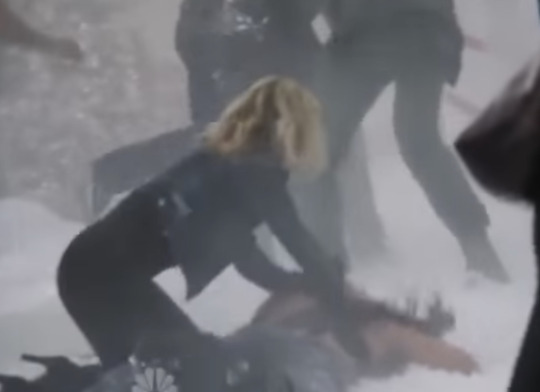
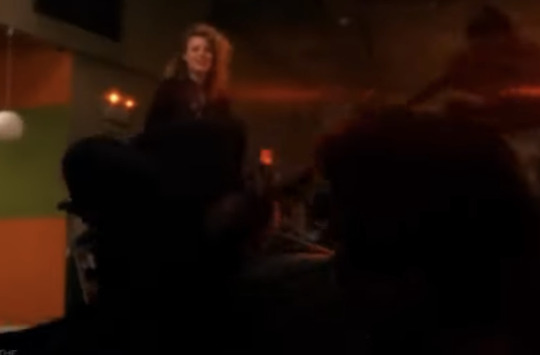
#for all of those saying it’s because she lived in NY#ily😭🤍#six seasons#and a movie#knock knock#floor#FLOOR BITCH FLOOR#community#six seasons and a movie#britta#perry#comparative religion#s1:e12#geothermal escapism#s5:e5#jeff winger#abed nadir#shirley bennett#pierce hawthorne#annie edison
81 notes
·
View notes
Text
“The ancient Masters were profound and subtle.
Their wisdom was unfathomable.
There is no way to describe it;
all we can describe is their appearance.
They were careful
as someone crossing an iced-over stream.
Alert as a warrior in enemy territory.
Courteous as a guest.
Fluid as melting ice.
Shapeable as a block of wood.
Receptive as a valley.
Clear as a glass of water.
—Tao Te Ching
#comparative religion#tao te ching#tao#lao tzu#spirituality#literature#meditation#philosophy#writing#books#quotes
10 notes
·
View notes
Text
2023 Reading Log, pt. 11

51. The Book of Fun by Russ Frushtick. This is a collection of anecdotes about and descriptions of various ways that people have fun, such as toys, games, festivals and theme parks. Each page has a paragraph or two of text and a painting to accompany it, and the book covers everything from the history of Coney Island to the time World of Warcraft had a plague. It’s a fun little miscellany, a good bathroom reader type of book, but not very substantial.

52. Queer Ducks (And Other Animals) by Eliot Schrefer. This book is aimed at young adult audiences (think high school students) and is about animal sexuality. It summarizes quite a bit of research, including pretty new material, covering homosexual behavior in animals. The thesis, of course, is that animals have a wide range of sexual behaviors, so these existing in humans as well is perfectly natural. The book also has interviews with a number of queer biologists about their research and their experiences with representation, intersectionality and other topics. Plus, there’s cartoons! Honestly, the cartoons are probably my least favorite part; they’re cute and have a funny premise (a QSA meeting at a high school for animals), but the animals are all mean and judgy with each other. This feels like it misses the point, even if it might be more accurate to the high school experience. Still, the writing is good, and it covers some stuff I had never heard of, like velvet bucks and other mammals that have common intersex members.
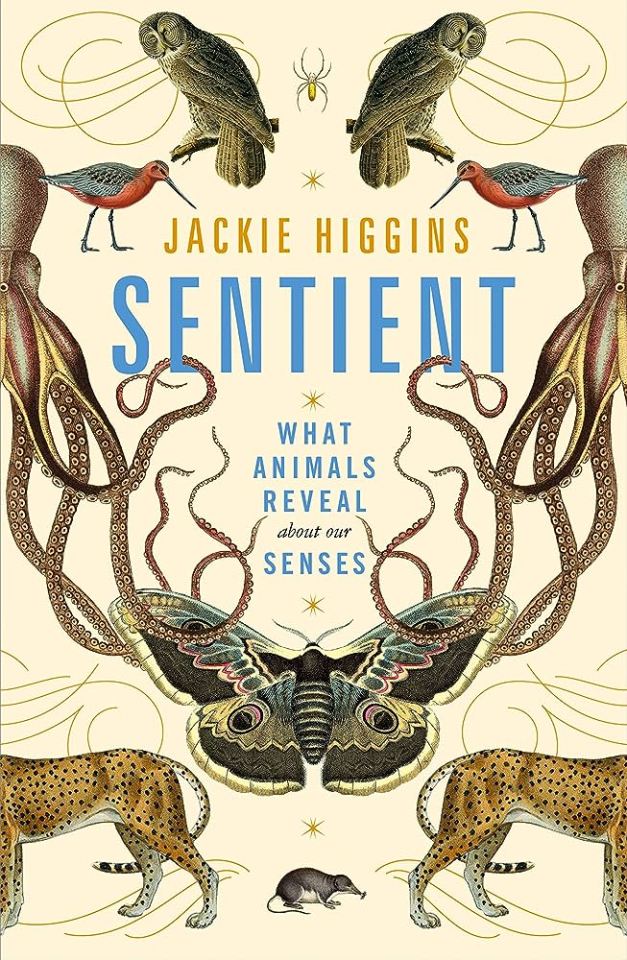
53. Sentient by Jackie Higgins. This book is about senses, using examples from the animal kingdom as a launching point to discuss how the sense works in humans. The book starts with vision, covering the many (tumblr famous) cones of the mantis shrimp, but how recent evidence suggests their color vision isn’t actually particularly good. I was familiar with most of the animal examples discussed, but a lot of the content on human health and senses was new to me. The material that wasn’t new to me, like the controversy over whether humans have pheromones are not, is told very well. And the coverage of the different kinds of touch, and how humans have touch receptors that seem to be linked to areas that are commonly groomed in other primates that are connected to things like mood and mental health… well, that helped put my touch starvation into context.
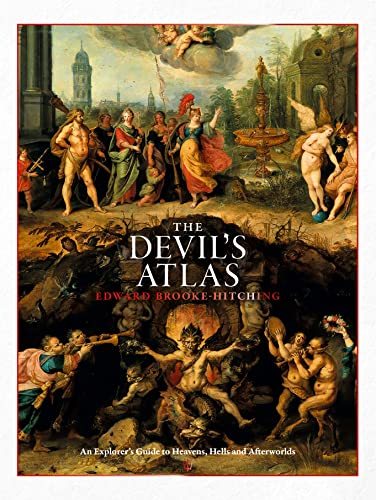
54. The Devil’s Atlas by Edward Brooke-Hitching. I usually quite like Edward Brooke-Hitching books, so this one was something of a surprise disappointment. The book talks about how different religions and cultures have conceptualized heavens, hells and other afterlives, with copious illustrations. My first complaint is the sorting into heavens and hells, when a lot of the afterlives discussed don’t really fit into the model of paradise or torment. The coverage of each is pretty superficial—there’s a post-script about utopias (including More’s Utopia) that I feel could have been cut in place of more thorough takes on the religions. My biggest complaint, though, is an editing one. No fewer than eight chapters are cut off, so that the last sentence (or even paragraph) is incomplete. It’s remarkably frustrating, and it took me right out of the book.
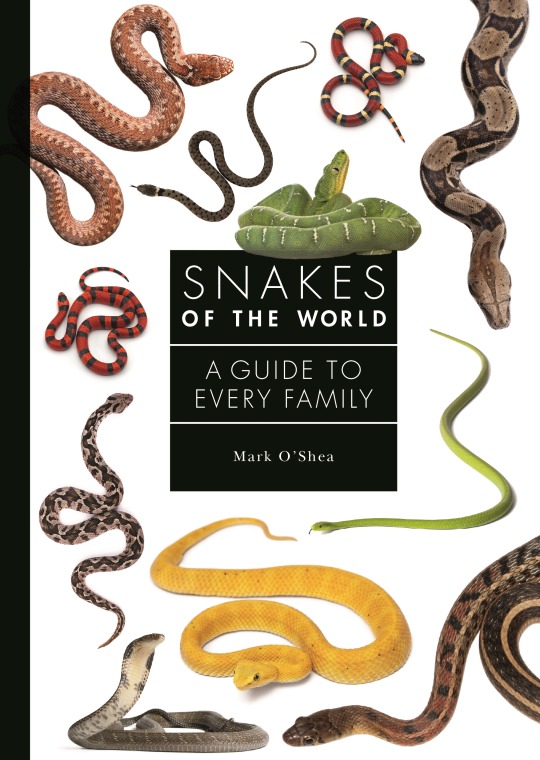
55. Snakes of the World by Mark O’Shea. Another in the X of the World series put out by Princeton University Press, this is pretty similar in content to the other books in the series. The first quarter or so of the pages are devoted to an overview of the biology of the group, and the rest of it is surveys of its biodiversity, organized by subfamilies and geographic regions. Mark O’Shea also wrote Lizards of the World, and this book seems in many ways to be a direct sequel to it. The main draw, of course, are the species accounts, which include gorgeous photography of a wide variety of species, including some very obscure taxa.
#reading log#snakes#herpetology#comparative religion#folklore#art book#animal behavior#neuroscience#biology#lgtbq#queer#games
26 notes
·
View notes
Text




37 notes
·
View notes
Text

Emanations of the Saviour; The Anointed, The Pervader, and the Enlightened
#religious#religion#jesus christ#vishnu#buddha#siddhārtha gautama#hinduism#christianity#buddhism#god#deity#hindu mythology#christian mythology#abrahamic mythology#mythology#comparative religion#coexist
150 notes
·
View notes
Text



recently, i've been enjoying the moment a lot more 🌹☕️
#studyblr#june enlightenment#record store#dark academia#journaling#university student#mindfulness#academia aesthetic#comparative religion#recovery#light academia#pink academia
18 notes
·
View notes
Quote
Thus the most conspicuous feature of the Divine Names is their double structure, that is, their having each two designations. Each Name designates, and points to, the unique Essence, while pointing to a meaning or reality which is not shared by any other Name.
Toshihiko Izutsu, Sufism and Taoism: A Comparative Study of Key Philosophical Concepts
#quote#Toshihiko Izutsu#Izutsu#Sufism#Taoism#philosophy#metaphysics#religion#spirituality#God#names#language#Divine Names#Islam#comparative religion#Tao#Divine
46 notes
·
View notes
Photo








Community gifs - 212/?
1x12, Comparative Religion
#nbc community#shirley bennett#troy barnes#jeff winger#community nbc#community 1x12#1x12#comparative religion#communityedit#communitygifs#yvette nicole brown#donald glover#joel mchale
107 notes
·
View notes
Video
youtube
https://www.youtube.com/watch?v=KO6ZRjhOozE
Yeah, yeah, yeah, another video with an earnest lady explaining why Christians should TOTES appropriate a Jewish holiday. But this one . . . I don’t know, man. Part of me wants to call it a comedy classic -- like, she completely blows the lid off the whole “Messianic Judaism is Christianity with Jew costumes” open secret in the first minute of the video, and it just gets weirder from there.
Part of me wants to point and laugh at her simultaneous claims that the Book of Esther is all about God’s care of people (the Book of Esther is, in fact, one of two books where there are only human characters, the other one being the Song of Songs) AND that she’s such an expert on Scripture and the Book of Esther from having done this so many times (though she seems to have missed a big aspect of it). Part of me also wants to point and laugh at the really quite shallow reasons that she gives for celebrating Purim -- like Mel Brooks’s original 1968 The Producers, part of what makes the fun work in a real Purim celebration is the undercurrent of boiling hot anger at the shit that the world wants to throw at the Jews -- this is the ur-type of the “they tried to kill us, they failed, let’s eat” holiday.
But then there’s another part of me that looks at this woman’s behavior and affect, and . . . I think I’m kind of worried about her, honestly. She has the big toothy smile, but she’s nervous, and she rambles, and you can see the facade crumbling as the video progresses. There are parts where she looks at the camera, and for an instant, she looks utterly terrified. What does she think is going to happen if she drops her smile or admits that she’s not feeling perky? Does she know that it’s antisemitism and she’s trying to avoid admitting that to herself? Is she afraid that her fundamental ignorance is going to show here? Is she even a real person at this point, or is she, much like her conception of Purim, nothing more than a frivolous confection of food and games and costumes and frantic partying desperate to distract you from the howling emptiness inside?
What is going on with this video?
19 notes
·
View notes